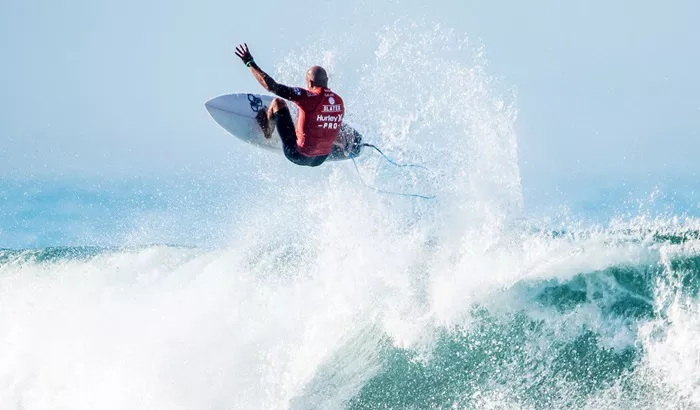Reverse surfing is one of the most thrilling and unconventional maneuvers in extreme water sports. Unlike traditional surfing where riders face forward and ride along the wave’s front, reverse surfing challenges athletes to ride with their back facing the wave’s curl. It demands agility, excellent board control, and precise body movements. In this guide, you’ll learn how to perform reverse surfing effectively and safely, regardless of whether you’re a beginner or a pro looking to advance your skills.
What Is Reverse Surfing?
Reverse surfing is when a surfer intentionally rides a wave while facing the opposite direction. This may involve either spinning the board during the ride or starting the ride backward. It’s a visually striking and technical trick, usually seen in freestyle or performance surfing.
Key Differences from Traditional Surfing
Body faces the wave instead of the beach.
Greater reliance on core balance.
Requires faster foot repositioning.
Why Learn Reverse Surfing?
- Improves board control.
- Enhances freestyle skills.
- Builds balance and coordination.
- Adds flair to your wave performance.
Preconditions Before You Begin
Essential Skills You Must Master
Before attempting reverse surfing, ensure that you can:
Paddle and stand confidently on a surfboard.
Control your board on waist- to shoulder-high waves.
Execute basic turns like cutbacks and snaps.
Adjust your stance quickly during the ride.
Best Conditions for Reverse Surfing
Small to medium wave height (2–4 feet).
Clean, glassy surf with minimal chop.
Low to moderate offshore wind.
Sandy bottom to reduce injury risk.
Choosing the Right Surfboard
Shortboard vs Fish vs Hybrid
Choose a board with responsive handling and sharp rails. Here’s what to consider:
Shortboards: Best for advanced tricks, high maneuverability.
Fish boards: Offer better stability for beginners to intermediate surfers.
Hybrid boards: Provide a good balance of speed and control.
Fin Setup and Traction Pads
Opt for a thruster fin setup for tighter control. Place traction pads on both front and rear foot positions to help during stance transitions.
Step-by-Step: How to Do Reverse Surfing
Step 1: Position Yourself Properly
Start paddling like a regular wave take-off. Choose a wave with a gentle shoulder. As you begin to catch the wave, shift slightly to the center of your board to maintain balance. Prepare mentally to spin or shift direction.
Step 2: Stand and Initiate the Reverse Motion
Pop up normally, but rotate your torso to face the back. This can be done in one of two ways:
Method A: Perform a quick 180° turn mid-ride using the tail pivot (for advanced riders).
Method B: Use a switch stance and ride the wave backwards from the start (better for practice).
Step 3: Balance and Ride
Once in reverse stance, keep your knees bent and your core tight. Your front foot (now at the tail) should bear slightly more weight. Use small foot adjustments to maintain trajectory. Look over your shoulder to anticipate the wave’s movement.
Step 4: Exit Smoothly
Before the wave ends, you can either revert back to regular stance or complete the ride in reverse. Use a small kickout or hop to turn if needed.
Common Mistakes to Avoid
1. Rigid Upper Body
Staying too stiff reduces your ability to rotate and absorb wave energy. Stay relaxed and fluid in motion.
2. Poor Footwork
Don’t overstep or cross feet when switching direction. Practice switch stance footwork on land before trying in water.
3. Attempting on Big Waves Too Early
Start small. Big waves require faster reactions and stronger skills, which come with practice.
Training Tips to Improve Faster
Practice on Land
- Use a balance board to simulate reverse stance.
- Drill 180° body spins.
- Step on and off the board repeatedly to build muscle memory.
Surfskate Training
Use a surfskate on flat ground to simulate carving and reverse turns. Practice flowing movements and transitions to build confidence.
Video Review
Record your practice sessions and review them to see where you lose control or miss balance cues. Small improvements make a big difference.
Is Reverse Surfing Safe?
Risks to Consider
- Falling backward off the board unexpectedly.
- Reduced visibility of incoming obstacles or surfers.
- Sprained ankles or pulled muscles during stance switches.
How to Stay Safe
- Always warm up before surfing.
- Wear a leash and rash guard or wetsuit.
- Choose less crowded beaches for practice.
- Never try reverse surfing in reef breaks until you’re advanced.
Expert Advice for Advanced Surfers
Combine Reverse Surfing with Aerials
Once you’ve mastered basic reverse surfing, combine it with other maneuvers like reverses, shuvits, or aerial spins. This creates a progressive style admired in competitive circles.
Reverse Into Tube Riding
Advanced surfers may ride in reverse into a tube (barrel). This requires tight control and awareness, and is one of the most visually impressive moves in the sport.
Reverse Surfing Competitions
Where It’s Showcased
Reverse surfing is not a separate competition category, but it often appears in:
- Freestyle competitions.
- Air shows and surf expression sessions.
- Video parts and sponsor clips.
Famous Surfers Who Do It
- Jamie O’Brien
- Mason Ho
- John John Florence
They often incorporate reverse maneuvers into their free surfing and online content.
Conclution
Reverse surfing may look wild and difficult, but with step-by-step practice and patience, it becomes a valuable trick in your surfing playbook. Whether you’re trying to impress your friends or just want to improve your control and agility on the wave, reverse surfing is worth learning. Always prioritize safety, progress gradually, and enjoy the learning process.

